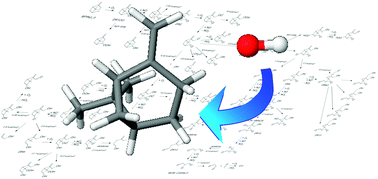An extensive mechanism for the OH-initiated oxidation of β-pinene up to the first-generation products was derived based on quantum chemical calculations, theoretical kinetics, and structure–activity relationships. The resulting mechanism deviates from earlier explicit mechanisms in several key areas, leading to a different product yield prediction. Under oxidative conditions, the inclusion of ring closure reactions of unsaturated alkoxy radicals brings the predicted nopinone and acetone yields to an agreement with the experimental data. Routes to the formation of other observed products, either speciated or observed as peaks in mass spectrometric studies, are also discussed. In pristine conditions, we predict significant acetone formation following ring closure reactions in alkylperoxy radicals; in addition, we predict some direct OH recycling in subsequent H-migration reactions in alkylperoxy radicals. The uncertainties on the key reactions are discussed. Overall, the OH-initiated oxidation of β-pinene is characterized by the formation of a few main products, and a very large number of products in minor to very small yields.

You have access to this article
 Please wait while we load your content...
Something went wrong. Try again?
Please wait while we load your content...
Something went wrong. Try again?


 Please wait while we load your content...
Please wait while we load your content...